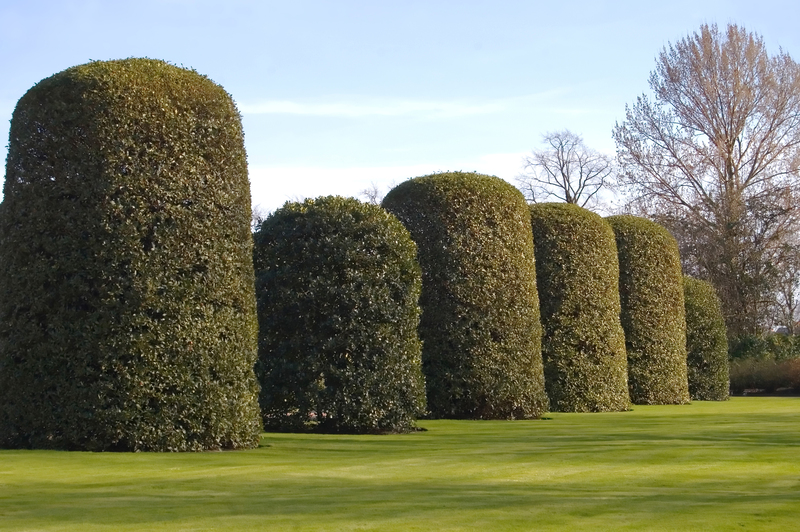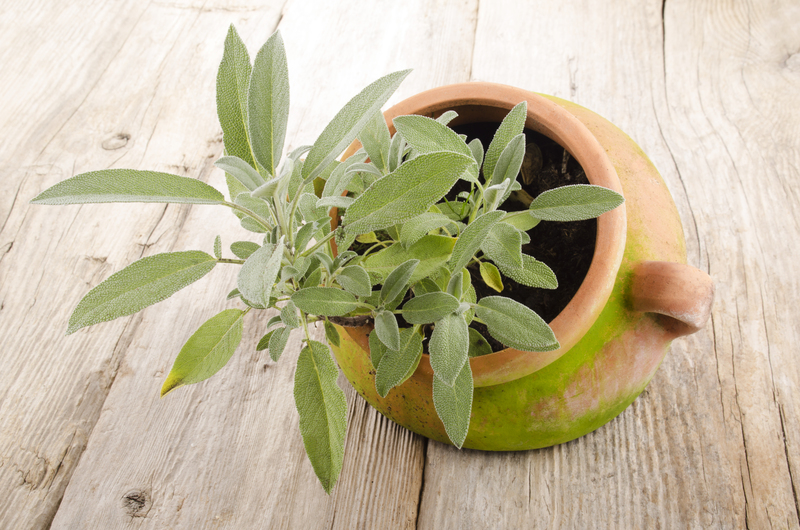Innovative Gardening Solutions for Dog Owners
Posted on 22/08/2025
Innovative Gardening Solutions for Dog Owners
Are you a dedicated gardener and a passionate dog owner? Balancing a thriving garden with the playful energy of a canine companion can be a delightful challenge. From protecting precious plants to providing a safe and stimulating environment for your pet, discover innovative gardening solutions for dog owners that ensure both your garden and your furry friend flourish.
Why Do Dog Owners Need Special Gardening Solutions?
Gardens are spaces of beauty, relaxation, and creativity - and for dogs, they are territories for exploration, play, and sometimes mischief. Understanding the unique needs of dogs within shared outdoor spaces is crucial to preserve your landscape and guarantee your pet's safety. Let's explore why gardeners with dogs require creative approaches:
- Safety First: Certain plants and mulches can be toxic to pets.
- Durability: Dogs may dig, trample, or chew on plants and garden structures.
- Sanitation: Pet waste can damage grass and plants while posing health risks.
- Enrichment: Dogs need their own engaging outdoor zones to discourage destructive behaviors.
_With proper planning and innovative strategies, you can enjoy a lush and dog-friendly garden!_

Designing a Pet-Friendly Landscape: The Basics
Understanding Your Dog's Behavior
Begin by observing your dog's preferred pathways, favorite digging spots, and lounging areas. Tailoring your garden design around your dog's patterns not only makes coexistence easier but also helps protect your plants.
- Install clear pathways using gravel, paving stones, or bark mulch for your dog's usual routes.
- Zone your garden by designating specific dog-friendly and dog-free areas for planting sensitive species.
- Provide shade, fresh water, and outdoor shelter where your dog can comfortably rest.
Boundary Solutions: Fences and Barriers
Physical barriers are often necessary innovative gardening solutions for dog owners. Consider the following options:
- Secure fencing: Install fences at least 4-6 feet high, depending on your dog's size and agility. Reinforce bottom edges to prevent digging under.
- Garden edging: Create plant beds with sturdy, decorative borders made of stone, metal, or recycled landscape timbers to keep paws off.
- Living barriers: Dense, dog-safe shrubs (like boxwood or rosemary) can define boundaries while maintaining natural beauty.
Choosing Dog-Resistant Plants and Lawn Types
The Best Plants for Dog-Friendly Gardens
Opt for hardy, non-toxic plants that withstand rough play and occasional trampling. Some great choices include:
- Lavender
- Marigolds
- Sunflowers
- Mulberry bush
- Bamboo (avoid invasive species)
- Snapdragons
- Camellia
Avoid These Toxic Plants
Certain common garden plants can be toxic to dogs. Make sure your garden is free from these species:
- Lilies
- Foxglove
- Oleander
- Azaleas
- Daffodils
- Tulips
Always check the ASPCA's list of toxic plants for pets before purchasing anything new.
Dog-Proofing Your Lawn
A lush green lawn is a joy, but pets often cause wear and unsightly patches. Here's how to keep your turf resilient:
- Choose robust grass species like Bermuda, Kentucky bluegrass, or tall fescue that can handle foot and paw traffic.
- Consider artificial turf: Modern synthetic lawns are safe for dogs, easy to clean, and highly durable.
- Install a pee post: Train your dog to use a specific area for toileting, preventing burn marks.
- Regularly hose down pet areas to dilute and minimize urine damage.
Innovative Hardscaping for Dog Owners
Paw-Friendly Paths
Design paw-friendly walkways with smooth surfaces that won't get too hot or damage your dog's feet. Good options include:
- Flagstone or natural stone set in sand
- Crushed granite (decomposed granite)
- Rubber pavers
- Bark mulch (untreated, pet-safe)
Avoid cocoa mulch, as it can be toxic to dogs.
Dedicated Dog Zones
Minimize damage to your favorite flower beds by setting up a designated dog play area. Try these ideas:
- Sandpits for digging: Fill a raised wooden box with clean sand, training your dog to use it for digging instead of planted areas.
- Agility features: Incorporate tunnels, low jumps, or ramps to add canine excitement and exercise opportunities.
- Doggy pools and splash zones: Install shallow water features where dogs can cool off safely in hot weather.
- Outdoor toys and treat puzzles to keep dogs mentally stimulated and occupied.
Clever Ideas for Protecting Garden Beds
Raised Beds and Container Gardening
Elevated planters and container gardens help keep prized flowers and vegetables safely out of reach. These solutions also make gardening more accessible and manageable.
Tips:
- Ensure containers are stable and not easily knocked over.
- Choose sturdy materials like metal, wood, or heavy ceramic.
- Add trellises for climbing plants to maximize vertical space.
Mulching Wisely
Select mulch that's safe for pets and effective at suppressing weeds:
- Pine or cedar mulch (ensure it's pet-safe and free from toxins)
- Gravel or stone chips in non-digging areas
- Shredded bark (non-toxic varieties)
Reapply mulch regularly to keep it fresh, suppress weeds, and protect young plants from curious noses and paws.
Dog-Safe Pest and Weed Control
Chemical pesticides and herbicides can be harmful to pets. Embrace natural, pet-safe gardening solutions:
- Manual weeding and mulching for weed control
- Diatomaceous earth for slug and insect management
- Nematodes to control grubs and soil pests
- Companion planting (e.g., marigolds for insect management)
- Pet-safe repellents made from vinegar, citrus, or essential oils (always verify safety first!)
Never use snail or rodent baits unless clearly labeled "pet-safe."
Low-Maintenance, Canine-Friendly Landscaping Ideas
Busy dog owners can still enjoy a beautiful garden by adopting low-maintenance landscaping:
- Xeriscaping: Use drought-resistant, hardy plants that thrive even with occasional disturbance.
- Ground covers: Plant clover, creeping thyme, or Irish moss instead of traditional grass for soft, green, and durable lawns.
- Perennial borders: Choose perennials that bounce back year after year despite a little canine roughhousing.
- Automatic irrigation: Install drip systems or soaker hoses, keeping irrigation tubes covered or hidden from chewing pups.
Tips for Training Your Dog to Respect the Garden
Training is as important as design when it comes to innovative gardening solutions for dog owners. A few dog-training basics can prevent frustration and keep your garden pristine:
- Positive reinforcement: Reward your dog for staying on paths or using designated areas for play and toileting.
- Redirect digging: If your pet starts digging in the wrong spot, gently guide them to their sandpit.
- Supervision: Offer supervision during outdoor play, especially if your garden is newly established.
- Set boundaries: Use temporary fencing or garden netting until your dog masters the household rules.
Consistency is key - soon your pet will learn their place in the landscape!
Smart Gadgets and Tools for Dog-Friendly Gardens
- Motion-activated sprinklers: Deter digging or trampling in off-limits zones.
- Pet cameras: Monitor your dog's activity to address unwanted behaviors in real time.
- Automated watering systems: Maintain healthy plants while saving time.
- Sturdy garden furniture: Choose dog-proof seating that doubles as shade or rest spots for your canine friend.

Create a Harmony Between Dogs and Gardens
With so many innovative gardening solutions for dog owners, sharing your yard with a four-legged friend no longer means giving up your dream garden. By combining clever design, hardy plants, dog-safe materials, and positive training, you can cultivate a beautiful, pet-friendly landscape that delights both human and canine occupants.
Start your journey today: Walk through your garden with fresh eyes, considering both your needs and those of your pup. Test new solutions, involve your dog in the process, and celebrate the joys of a flourishing dog-friendly garden!
Frequently Asked Questions: Dog-Friendly Gardening
- What mulch is safe for dogs? Pine, cedar, or shredded hardwood are typically safe if untreated. Avoid cocoa mulch, as it can be toxic.
- How do I keep my dog from digging up plants? Provide a dedicated digging area, use raised beds, and consider motion-activated deterrents.
- Which plants are best for high-traffic dog areas? Hardy, resilient plants like lavender, marigold, and ornamental grasses perform well.
- How can I repair grass damaged by dog urine? Hose down affected areas promptly and overseed with robust grass varieties.
Conclusion
Gardening with dogs is a partnership enriched by creativity, compassion, and smart solutions. With these innovative gardening strategies, your backyard can be a safe, vibrant, and flourishing haven for both you and your furry best friend.
If you enjoyed these innovative gardening tips for dog owners, share your own creative solutions, and together, let's make every garden a pet-friendly paradise!

